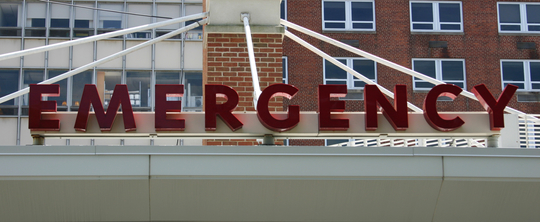By Daniel Buchman
Earthquakes. Floods. Mass shootings. Highly pathogenic strains of influenza. What do these disasters have in common? They all have the potential to cause massive levels of morbidity and mortality. Some of these situations happen quickly with immediate impact, like mass shootings. Others happen slowly with large numbers of casualties growing over time, such as pandemic influenza. In all situations, there are huge losses of life, unbearable suffering, and they can overwhelm hospitals, health systems, and communities. Hospitals refer to these mass casualty incidents as a Code Orange.
In Canada, and in many parts of the world, researchers, healthcare professionals, and members of the public have attempted to describe the relevant ethical values that underpin decision-making in planning for and during a mass casualty, particularly in the wake of experiences such as SARS and Hurricane Katrina. Some of these values include:
- Individual liberty: Governments and hospitals may be required to place restrictions on individual liberty (e.g. quarantine) to protect the public from harm.
- Fairness and equity: Plans in response to a mass casualty incident must be perceived as fair by affected parties. This includes a fair process for decision-making. A fair plan must also reflect the needs of structurally vulnerable populations. Furthermore, hospitals will have to make hard decisions about which services (e.g. some surgeries) will be cancelled or limited in favour of other healthcare services that addresses a prioritized need in response to the mass casualty.
- Proportionality: Restrictions on individual liberty should be proportionate to the scope and severity of the mass casualty, and more restrictive means on liberty should be reserved only when less restrictive methods have failed.
- Public engagement: Plans to address a mass casualty incident must reflect an inclusive public engagement process where stakeholder voices and communities’ values are reflected, and the voices of the most structurally vulnerable members of society are amplified.
- Reciprocity: Society has an obligation to protect and care for those individuals who take on additional burdens in protecting the public during a mass casualty. For example, healthcare professionals may bear a disproportionate burden by taking on higher than normal levels of risk to themselves and their families. For healthcare professionals, reciprocity may include providing support over the long-term for those who face risks to their physical and mental health.
- Solidarity: Solidarity acknowledges our shared vulnerability, our interdependence, and that ‘we are all in this together’. This includes solidarity within and across healthcare institutions and systems.
In a mass casualty incident, the demand for scarce healthcare resources will likely exceed the supply—even more than usual. Healthcare professionals may find themselves in situations where there are several patients who require access to the same scarce resource. For example, who should get a ventilator when there aren’t enough to go around? How should hospitals ration blood products? Such difficult, gut-wrenching decisions cannot be made by looking to the medical literature alone. Decision-makers need a fair process to justify resource allocation decisions, as well as criteria that reflects what most people can accept as fair. In their book, Setting Limits Fairly: Can we Learn to Share Medical Resources?, Norman Daniels and James Sabin describe the conditions that should guide an open and transparent priority setting decision-making process in a framework called Accountability for Reasonableness:
- Relevance:Decisions should be transparent and based on reasons that fair-minded people can agree are relevant to priority setting in the mass casualty context.
- Publicity: Decisions and their rationales should be transparent and made publicly accessible.
- Appeals: There should be opportunities to revisit and revise decisions and their rationales in light of new evidence. There also should be a mechanism to resolve disputes.
- Enforcement: Assurance that the other four conditions are met, either voluntarily or regulatory.
A mass casualty creates a situation where governments, healthcare professionals, communities, and leaders need to make decisions that nobody should ever have to make. Planning for a mass casualty is a critical undertaking that health systems must make nowadays. Indeed, many hospitals in Canada and around the world have emergency preparedness plans well underway. Having a strong plan, grounded in ethical values to guide decision-making, can help promote the interests we have in common with one another: our safety, survival, and security.
Daniel Buchman is a Bioethicist at the University Health Network (UHN), a Clinician Investigator in the Krembil Research Institute, an Assistant Professor in the Dalla Lana School of Public Health, and a Member of the University of Toronto Joint Centre for Bioethics. He is also a member of the UHN Code Orange Steering Committee. @DanielZBuchman



